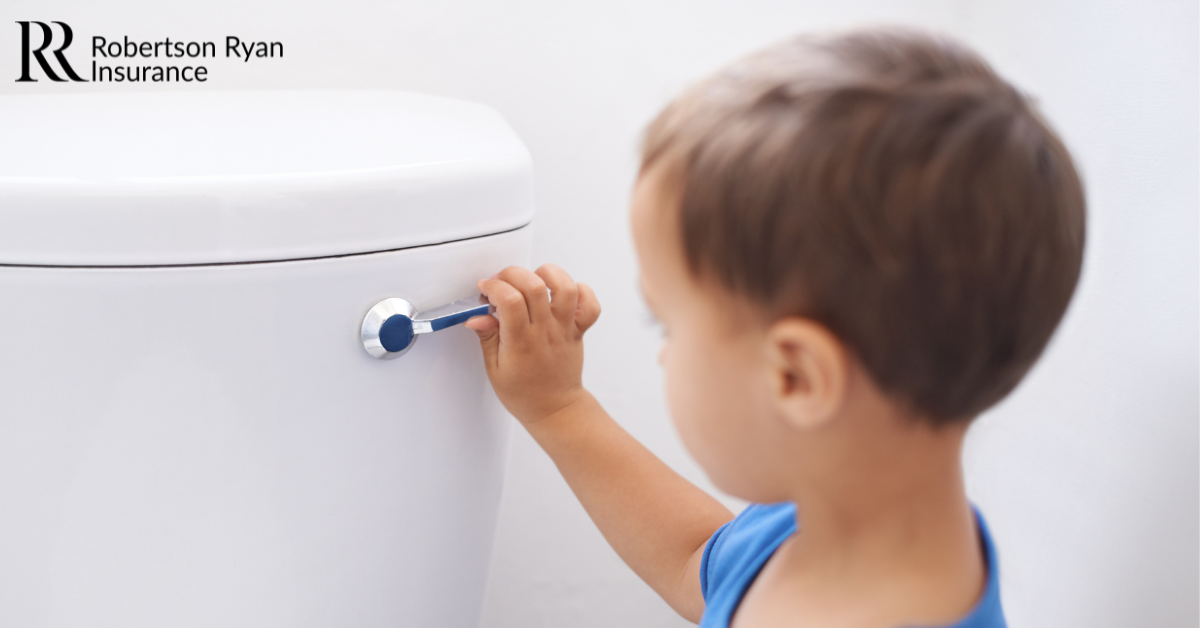How to Protect Against Sewer Backups and Plumbing Leaks
July 15, 2025

Don’t Let Water Damage Drown Your Budget
A water-related tragedy can happen when you least expect it: a sump pump fails during a storm, a hidden pipe springs a leak, or your sewer line backs up into your space. While these events may seem unpredictable, many can be prevented or managed with the right tools and coverage in place.
If you’re a homeowner or renter, here’s what you need to know about the common causes of water damage, early warning signs to watch for, and how insurance endorsements and technology can help protect your home and belongings.
Water Backup: What It Is and Why It Matters
Standard home, condo or renters insurance policies typically do not cover damage caused by sewer or drain backups or sump pump overflows. These events can cause costly damage to flooring, furniture, personal property, and even force you out of your home during cleanup.
Water backup coverage is an optional add-on (also known as an endorsement) that can help pay for damage caused by:
- Sewers or drains that back up into your home
- Sump pump failures or overflows
This coverage may assist with costs like cleaning up, replacing damaged belongings, and even temporary lodging if your property becomes uninhabitable.
You might want to consider this endorsement if:
- You have a basement (especially if it’s finished)
- Your home has older plumbing or large trees nearby
- Your community relies on an aging municipal sewer system
Red Flags: Signs of Sewer or Drain Backup
Don’t wait for disaster to strike. Watch for these warning signs of a potential sewer backup:
- Persistent odors coming from drains or toilets
- Gurgling sounds in plumbing fixtures
- Slow drainage in sinks, tubs, or toilets
- Unusual puddling inside or outside the home
- Toilets or sinks backing up with water or waste
- Increased insect activity around drains
- Sudden lush patches in your yard near sewer lines
These can indicate a clog, tree root intrusion, or a break in the line. Acting early by calling a plumber or sewer professional can help prevent more costly damage.
Plumbing Leaks: The Hidden Threat
Unlike sewer backups, plumbing leaks are often silent and gradual. A small drip behind a wall or under a floor can go undetected for weeks or months, leading to mold, warped flooring, or structural issues.
One of the most effective ways to guard against this is with a leak detection system.
What these systems do:
- Monitor water flow through your pipes
- Detect abnormal usage or continuous flow
- Automatically shut off the water to prevent damage
- Alert you via smartphone in real time
Some systems use mechanical turbines, while others rely on non-intrusive sonar technology. Most are installed at the main water line entry point and can cost between $500 and $1,000, a small investment compared to potential damage. Some insurance carriers may even offer a discount if you install one (ask your Robertson Ryan Agent to confirm).
What Insurance May (and May Not) Cover
Understanding how your insurance responds to water damage is key to being prepared. Here’s a simplified breakdown:
| Scenario | Typically Covered? |
| Sewer or sump backup | With water backup endorsement |
| Burst pipe (sudden & accidental) | Often included in standard policy |
| Gradual leaks from wear & tear | Not typically covered |
| Appliance breakdown (e.g., sump pump) | Damage may be covered, replacement of the unit usually not unless added equipment breakdown coverage is in place |
| Flooding from outside (rivers, storms) | Requires separate flood insurance |
| Underground service line breaks | Consider service line coverage |
Always check your policy or speak with your Robertson Ryan Insurance Agent for details specific to your home and coverage limits.
Practical Tips to Help Prevent Damage
To reduce your risk of a sewer backup or leak:
- Avoid flushing anything other than toilet paper
- Schedule regular drain and sewer inspections
- Keep tree roots away from underground lines
- Install backflow prevention valves in basement drains
- Don’t pour grease or large food particles down your kitchen sink
- Flush plumbing lines occasionally to keep water moving
- Consider installing a leak detection system with auto shutoff features
In Case of a Backup or Leak: What to Do
- Act quickly. Shut off water or power if needed to stop damage from spreading.
- Document everything. Take photos of affected areas and belongings.
- Limit cleanup. Wait until a professional or insurance adjuster has inspected before making major repairs.
- Wear protection. If sewage is involved, use gloves and avoid direct contact with contaminated water.
- Notify your insurer. They can help guide next steps and advise you of your options.
The Bottom Line
Water damage from sewer backups and plumbing leaks can be costly, inconvenient, and sometimes hazardous to your health. But with a combination of prevention tools like leak detection systems, smart plumbing habits, and appropriate insurance coverage, you can significantly reduce your risk if something does go wrong.
If you’re unsure about your current protection, talk to your Robertson Ryan Insurance Agent about available endorsements or upgrades that can help safeguard your home or apartment. It’s always better to prepare before a problem arises.
Looking for an agent? Find one to quote you here.
*Please note that we rely on independent sources, and recommend conducting further research or to seek guidance from a qualified industry professional, legal counsel, or licensed insurance.